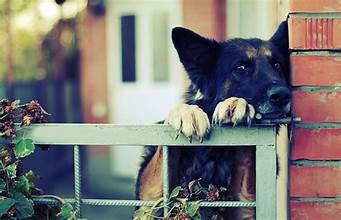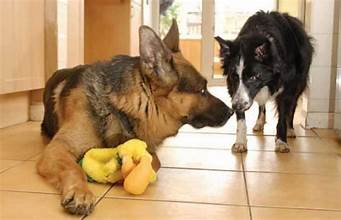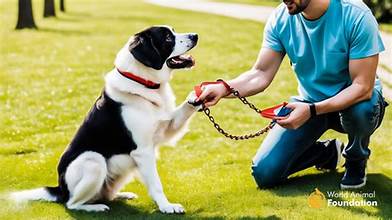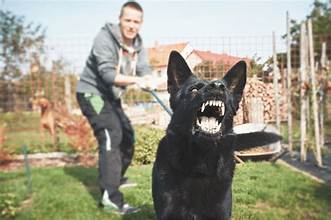Dog aggression can be challenging for any pet owner. Understanding the causes, types, and ways to manage and train aggression is essential for a harmonious relationship with your dog. This guide will help you recognize various types of aggression, uncover potential causes, and learn practical strategies to manage and train aggressive behaviors.
Types of Dog Aggression
1. Territorial Aggression
Dogs with territorial aggression guard their space and may react aggressively to anyone entering their perceived “territory,” such as your home or yard.

2. Protective Aggression
Protective aggression is common in dogs with a vital duty to protect their family. It may manifest when a dog perceives a threat to a loved one.
3. Possessive Aggression
Also known as resource guarding, this type occurs when dogs become defensive about items they value, like food, toys, or their bed.

4. Fear Aggression
When dogs feel cornered or scared, they may lash out in self-defense. This is often seen in rescue dogs or those with traumatic pasts.
5. Social Aggression
Dogs with social aggression struggle to understand or accept hierarchy, especially around other animals. This type is often observed among untrained or less socialized dogs.
6. Frustration-Elicited Aggression
Dogs can become aggressive if frustrated, especially if they cannot reach something they want. This is common when a leash or fence restrains dogs.
7. Pain-Related Aggression
When in pain, dogs may react aggressively to protect themselves. Dogs with arthritis or other chronic conditions are especially prone to this type.
Possible Causes of Dog Aggression
Lack of Socialization:
Early socialization helps dogs become familiar with various environments, people, and other pets. A lack of exposure to other animals can lead to fear and aggression.
Trauma or Past Abuse:
Dogs with a history of mistreatment may be more prone to aggressive behavior.
Medical Issues:
Conditions like hypothyroidism, neurological problems, or chronic pain can make dogs more irritable and grumpy, which can cause your dog to be more prone to aggression.
Genetics and Breed Traits:
Certain breeds have naturally protective or guarding instincts, but remember that dogs can display aggression if not trained or socialized properly.
Poor Training Practices:
Harsh training methods can increase aggression. Positive reinforcement is a positive, more effective, and humane approach.
Tips for Managing and Training Through Dog Aggression
1. Identify Triggers
Observe your dog’s behavior to pinpoint specific triggers, such as certain noises, people, or environments. Understanding what sets off your dog’s aggression is the first step toward managing it effectively.
2. Use Positive Reinforcement
Rewarding good behavior and ignoring aggressive tendencies encourages your dog to repeat positive actions. Treats, praise, and playtime can all be powerful rewards.

3. Avoid Punishment
Physical or verbal punishment often worsens aggression. Dogs may become fearful and even more defensive. Instead, remain calm and redirect their attention to a constructive activity.
4. Desensitization and Counter-Conditioning
Slowly exposing your dog to their triggers in a controlled way can reduce their aggressive reaction. For example, if your dog is territorial, slowly introduce new people in a relaxed setting.
5. Seek Professional Help
Working with a certified dog trainer or a veterinary behaviorist is essential for aggressive dogs. They can create a plan to manage and mitigate aggressive tendencies effectively.
6. Practice Obedience Training
Basic commands like “sit,” “stay,” and “leave it” can improve your dog’s impulse control, helping your dog feel more secure and less likely to react aggressively.
7. Regular Exercise and Mental Stimulation
A tired dog is a relaxed dog. Daily exercise and mental stimulation prevent boredom, which can lead to frustration and aggression. Consider interactive toys, puzzle feeders, and agility exercises.
8. Provide a Safe Space
Create an area where your dog can retreat and feel safe. This can reduce territorial and protective aggression, as they know they have a personal space.
Final Thoughts
With patience, consistency, and understanding, you can work through aggressive behaviors with your dog, creating a safer and happier environment for both of you.




